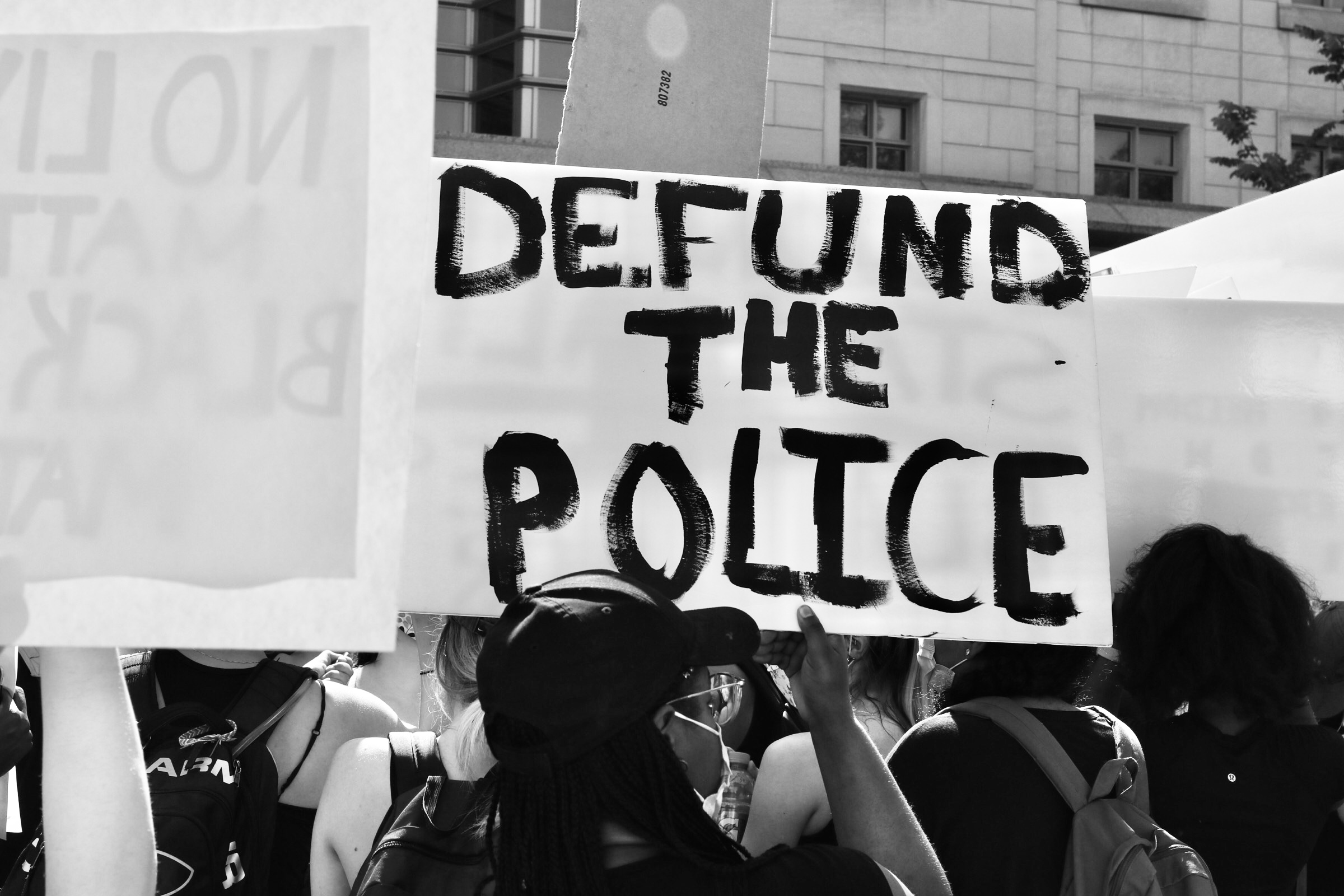
“Defund the Police”: A Strategy Towards Abolition
Written on posters throughout cities around the world, the words “Defund The Police” have been a popular response to systemic racism and police violence. Considering the reality that Indigenous and Black people are disproportionately affected by police violence in Canada, the pleas to divest funding from police departments aim to reduce contact between the public and the police. Recently, a growing number of people have realized that the police system is not “broken”, but rather operates exactly as it was designed: to surveil, confine and punish Black and Indigenous people in the name of public security.
As outlined in Robyn Maynard’s “Policing Black Lives”, we can study how Canadian law enforcement is rooted in anti-blackness. As early as the 17th century, self-liberated Black people have been portrayed as thieves and criminals in advertisements. More recently in 2014, police textbooks in Québec taught students that “Black people commit more crimes than whites” and that the crimes Black people commit are the most violent. Indeed, the policing of Black people has been defended using a tautological framework that associates blackness to criminality. Considering this reality, police abolitionist narratives have gained momentum as the solution to eradicating police brutality. While abolition is the goal, defunding has been proposed as a feasible initial strategy to diminish the scope, size, and power of police departments.
While the demands for police and prison abolition have aroused fear and confusion to some, abolitionist approaches to the criminal justice system are not new and have been voiced for decades by Black and Indigenous women in academia and activism, including Angela Davis, Robyn Maynard, and former McGill student Mariame Kaba to name a few. Despite abolitionist narratives often being framed as the destruction of existing systems, they equally advocate for the creation of new institutions void of violence that address the root causes of insecurity in our society including poverty and inequality.
The Police are a System Beyond Reform
In recent weeks, we have heard many Canadian government officials acknowledge the existence of systemic racism in our policing systems. However, the proposed popular reforms continue to focus on non-systemic approaches to change individual behaviour such as sensitivity training and body cameras. In Montreal, the Service de police de la Ville de Montréal (SPVM) has tried similar training before. In 2015, the Montreal Urban Aboriginal Community Strategy Network conducted lessons to SPVM agents on the history of colonization and its influences on today’s reality. This short-lived program was abruptly replaced by a workshop facilitated by a consultant with “experience training law enforcement” after several officers failed to participate and laughed during the workshops.
Similarly, there is no proof that implementing body cameras on SPVM agents will deter violent behaviour considering the poor accountability mechanisms our systems rely on. These realities have inspired a media campaign to defund the SPVM, which outlines a list of defunding and reinvestment policies petitioners are demanding elected officials implement.
Instead of improving police-citizen relations, these reforms can further perpetuate these systems of oppression by prolonging practices that brutalize Black and Indigenous people. As explained by Angela Davis “the problem is that reforms have often rendered the institution itself more permanent and ultimately more oppressive, more racist.” Indeed, these cosmetic commitments further mystify the violence that occurs in our criminal justice system, allowing many to believe the issues have been solved while the marginalized continue to suffer from police violence.
This Movement Does Not End with the Police
While the current momentum surrounding “Defund The Police” serves as a critical and necessary first step in reducing police presence in the lives of Black and Indigenous people, it is important to remember that, to be successful, we must address the social, political and economic injustices of our settler-colonial institutions. This requires a complete rethinking of the tools that have long-been presented as necessary for public safety and security but have violated the rights of Black and Indigenous people. Wouldn’t investing in poverty eradication, social housing, and community-based safety programs be more effective in reducing crime than the criminalization of poor, disabled and racialized communities?
Similar non-governmental programs already exist in Oregon, Sacramento, and Salt Lake City. This rethinking of public security and safety can be done by divesting from police departments and investing in the systems that are more effective: after-school education programs, rehabilitation centres, accessible mental health services, and care workers trained in de-escalation and medical assistance. This call to reimagine our violent policies must also expand to all areas of society which include the practice of migrant detention, incarceration, courts, immigration law, and countless more.
For decades, these demands have been described as ‘too radical’ and ‘over-ambitious’, but today many are realizing that they are the only way to ensure future generations may live in a just society. Reforms that have been presented as “pragmatic” and “incremental” are now being seen for what they truly are: complacent and ambivalent to the brutalization and murder of Indigenous and Black people.
Edited by Eyitayo Kunle-Oladosu
The opinions expressed in this article are solely those of the author and they do not reflect the position of the McGill Journal of Political Studies or the Political Science Students’ Association.
Feature Image by Taymaz Valley via Flickr Creative Commons